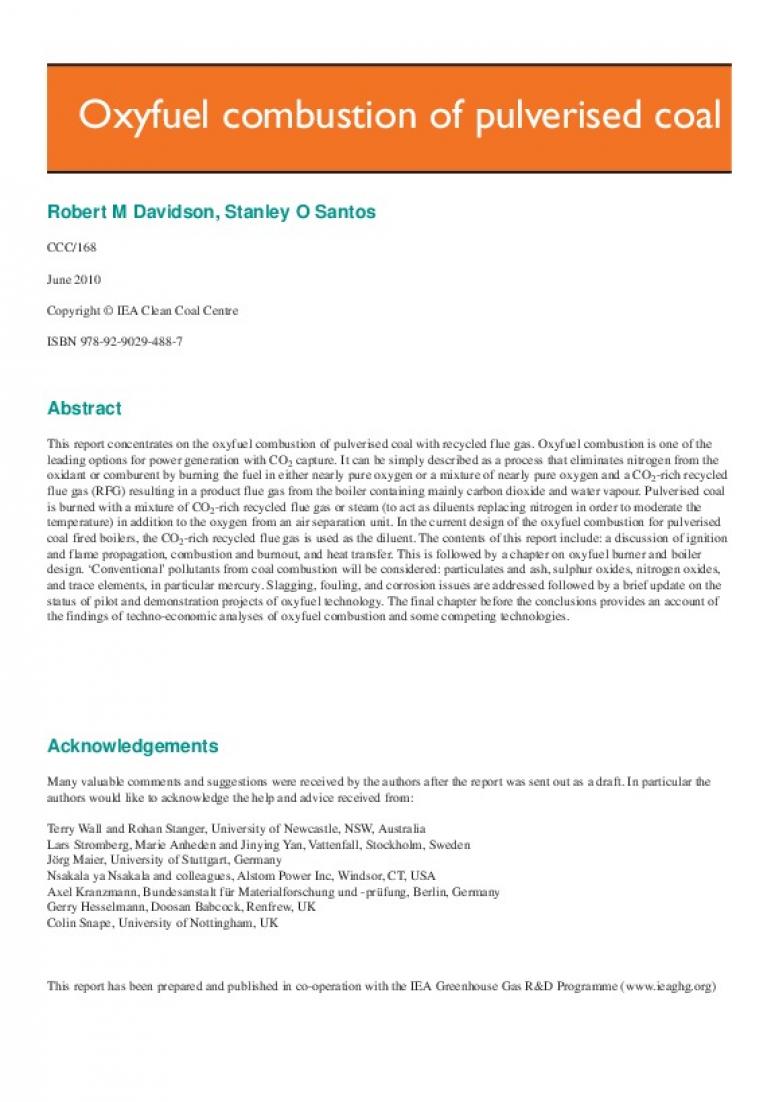CCC/168
June 2010
Copyright © IEA Clean Coal Centre
ISBN 978-92-9029-488-7
Abstract
This report concentrates on the oxyfuel combustion of pulverised coal with recycled flue gas. Oxyfuel combustion is one of the leading options for power generation with CO2 capture. It can be simply described as a process that eliminates nitrogen from the oxidant or comburent by burning the fuel in either nearly pure oxygen or a mixture of nearly pure oxygen and a CO2-rich recycled flue gas (RFG) resulting in a product flue gas from the boiler containing mainly carbon dioxide and water vapour. Pulverised coal is burned with a mixture of CO2-rich recycled flue gas or steam (to act as diluents replacing nitrogen in order to moderate the temperature) in addition to the oxygen from an air separation unit. In the current design of the oxyfuel combustion for pulverised coal fired boilers, the CO2-rich recycled flue gas is used as the diluent. The contents of this report include: a discussion of ignition and flame propagation, combustion and burnout, and heat transfer. This is followed by a chapter on oxyfuel burner and boiler design. ‘Conventional’ pollutants from coal combustion will be considered: particulates and ash, sulphur oxides, nitrogen oxides, and trace elements, in particular mercury. Slagging, fouling, and corrosion issues are addressed followed by a brief update on the status of pilot and demonstration projects of oxyfuel technology. The final chapter before the conclusions provides an account of the findings of techno-economic analyses of oxyfuel combustion and some competing technologies.
| Attachment | Size |
|---|---|
| 393.64 KB |


